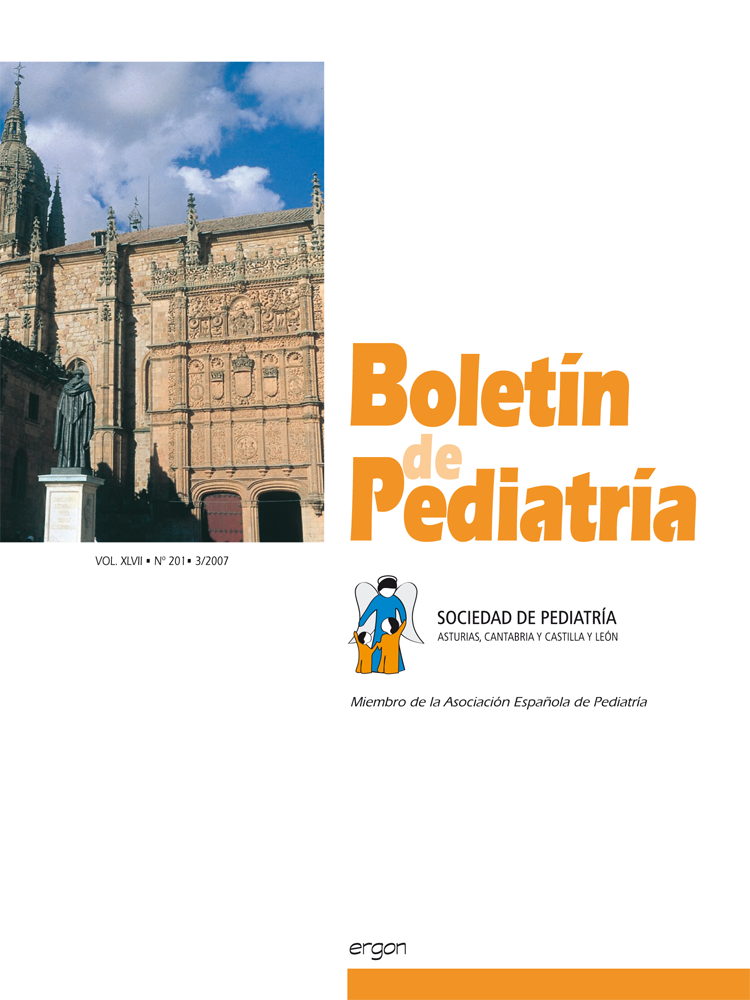Abstract
Objetivo: Estudio retrospectivo del modo de reanimación realizada en sala de partos y su relación con diferentes factores de riesgo, de todos los recién nacidos (RN) que precisaron reanimación, nacidos de enero a diciembre de 2004 en el Hospital Clínico Universitario (HCU) de Valladolid. Resultados: De los 1.364 RN en el período de estudio, 96 (7,03%) precisaron ventilación con presión positiva. De estos en el 6,89% mediante bolsa y mascarilla, y en el 0,73% mediante intubación traqueal. El líquido amniótico meconial y la prematuridad extrema fueron los factores con riesgo más alto de necesitar intubación traqueal en paritorio. Los niños nacidos mediante cesárea urgente o los procedentes de un parto vaginal mediante ventosa precisaron reanimación en el 14,12 y el 12% respectivamente La ventosa fue el parto vaginal instrumental con mayor riesgo. En un 20% de los RN que precisaron reanimación no se encontró ningún factor de riesgo, si bien todos respondieron a la ventilación con bolsa y mascarilla. En 6 niños el test de Apgar al minuto fue ? 3, en 76 fue ? 4 ó ? 7. En la valoración a los 5 minutos todos tenían una puntuación ? 7. Conclusión: Los recién nacidos con riesgo bajo o moderado que precisaron ventilación con presión positiva al nacimiento respondieron adecuadamente a la ventilación con bolsa y mascarilla. La prematuridad extrema y el líquido amniótico meconial fueron los factores de riesgo en los que con mayor frecuencia fue necesaria la intubación endotraqueal. Conocer el impacto sobre el feto de los diferentes factores de riesgo ayuda a optimizar la asistencia al recién nacido en sala de partos. Abstract Objetive: Retrospective study of the resuscitation practice at birth and the relationship with level of risk of different risk factors, of babies who required resuscitation at birth, born between january and december 2004 at HCU of Valladolid. Results: 1,364 infants were born in our hospital in 2004, of these 96 needed positive pressure ventilation. The proportion of babies receiving bag and mask ventilation was 6,89%, and intubation was undertaken in 0.73%. Infants with meconium-stained fluid and very preterm infants had a high risk of traqueal intubation. Infants born by emergency C-section and vacuum delivery need resuscitation in 14,12% and 12% respectively. Vacuum delivery as the instrumental delivery with high risk than others. In 6 infants the Apgar test was ? 3; in 76 was ? 4 ó ?7. At 5 minutes all infants had an Apgar test ? 7. Conclusion: The bag and mask ventilation was an useful method in resuscitation of infants with low or moderate levels of risk factors. In very preterm infants or in cases of meconium-stained fluid there were a high incidence of traqueal intubation Assignment of level of risk in a delivery, provides a safe means to take care of the newborn in the delivery room in the best conditions.

This work is licensed under a Creative Commons Attribution-NonCommercial 4.0 International License.
Copyright (c) 2007 Boletín de Pediatría
